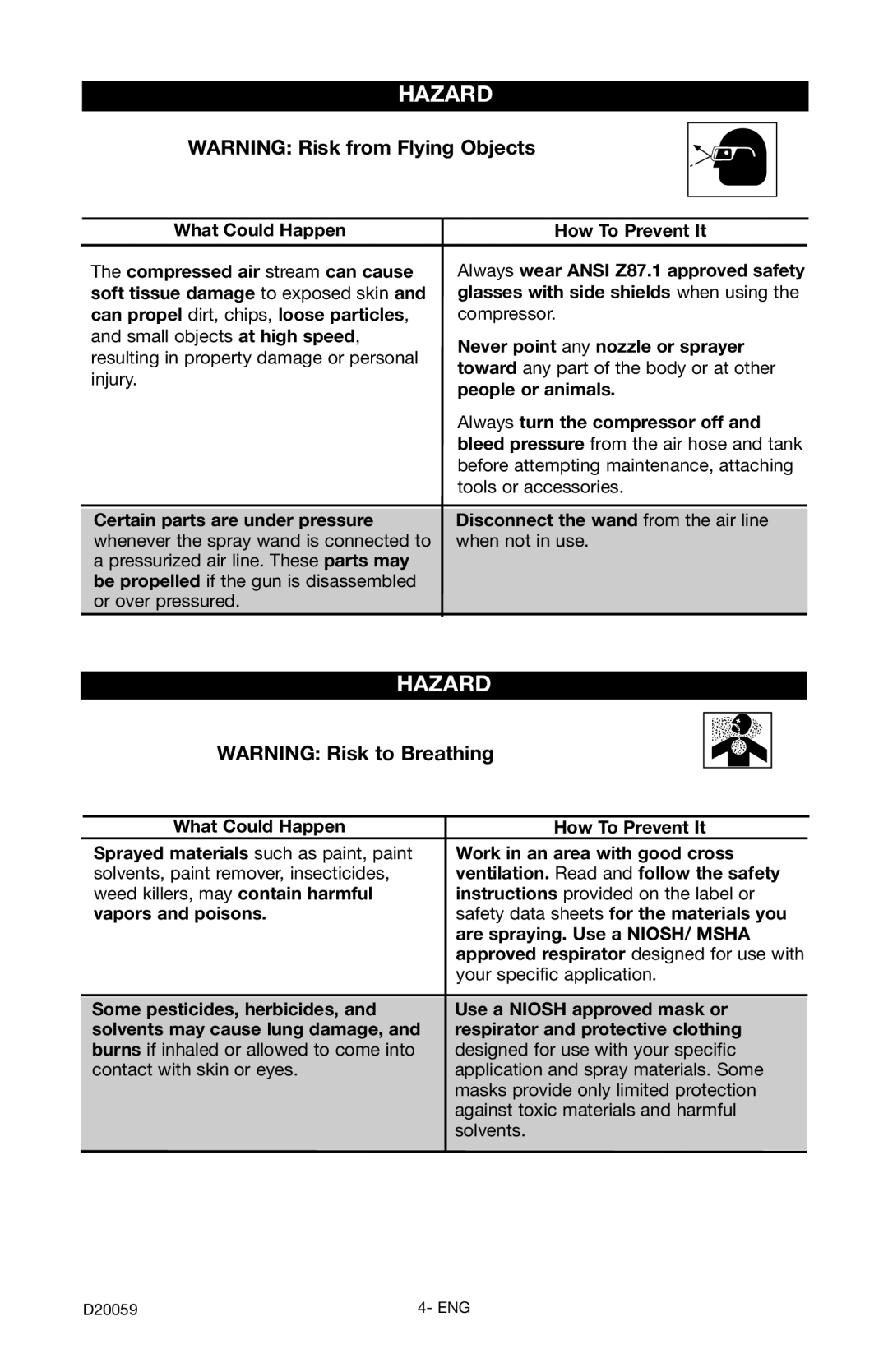
HAZARD
WARNING: Risk from Flying Objects
What Could Happen | How To Prevent It | |
The compressed air stream can cause | Always wear ANSI Z87.1 approved safety | |
soft tissue damage to exposed skin and | glasses with side shields when using the | |
can propel dirt, chips, loose particles, | compressor. | |
and small objects at high speed, | Never point any nozzle or sprayer | |
resulting in property damage or personal | ||
toward any part of the body or at other | ||
injury. | ||
people or animals. | ||
| ||
| Always turn the compressor off and | |
| bleed pressure from the air hose and tank | |
| before attempting maintenance, attaching | |
| tools or accessories. | |
|
| |
Certain parts are under pressure | Disconnect the wand from the air line | |
whenever the spray wand is connected to | when not in use. | |
a pressurized air line. These parts may |
| |
be propelled if the gun is disassembled |
| |
or over pressured. |
|
HAZARD
WARNING: Risk to Breathing
What Could Happen | How To Prevent It |
Sprayed materials such as paint, paint | Work in an area with good cross |
solvents, paint remover, insecticides, | ventilation. Read and follow the safety |
weed killers, may contain harmful | instructions provided on the label or |
vapors and poisons. | safety data sheets for the materials you |
| are spraying. Use a NIOSH/ MSHA |
| approved respirator designed for use with |
| your specific application. |
|
|
Some pesticides, herbicides, and | Use a NIOSH approved mask or |
solvents may cause lung damage, and | respirator and protective clothing |
burns if inhaled or allowed to come into | designed for use with your specific |
contact with skin or eyes. | application and spray materials. Some |
| masks provide only limited protection |
| against toxic materials and harmful |
| solvents. |
|
|
D20059 | 4- ENG |
